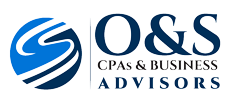Apple Fails in Last-Ditch Effort
On the weekend prior to the retrial on damages, Apple sought to increase the number of patents for which it could claim lost profits with a sketchy theory that ran counter to the damages model its own experts had constructed earlier. In an emergency motion, Samsung asked the court to preclude Apple’s alternative lost profits theory.
Sidestepping its own experts. In 2012, a jury awarded Apple over $1 billion in damages, finding that Samsung had infringed critical components of Apple’s iPhone and iPad. Damages included infringer’s profits, lost profits, and reasonable royalties. Subsequently, the district court (N.D. Cal.) agreed with Samsung that irremediable errors related to Apple’s damages calculation required it to reduce the award by some $450 million and order a retrial.
Poised for the new battle, Apple pursued nearly $380 million in additional damages. These included lost profits for a number of patents that its own experts earlier had found noneligible for lost profits because of a court-ordered shift in the start date for the design-around period. Specifically, Apple’s two damages experts developed a lost profits model based on the four Panduit factors: (1) demand for the patented product; (2) absence of acceptable noninfringing substitutes; (3) the patent holder’s manufacturing and marketing capabilities to exploit demand; and (4) the amount of profit the patent holder would have made. Panduit Corp. v. Stahlin Bros. Fibre Works, Inc., 575 F.2d 1152 (6th Cir. 1978).
Panduit’s Factor 2 was critical for their computation. The experts assumed that Samsung would design around Apple’s three patents when Samsung first infringed on them, not when it received actual notice of the infringement, and thus would be able to return to the market with noninfringing products “well before the dates on which Apple first became eligible for infringement damages.” At the same time, they assumed that Samsung’s alternative products would be as attractive to consumers as the infringing smartphones and tablets and Samsung would sell them in similar numbers to the infringing products immediately after it had introduced them into the market. Therefore, Apple could not claim any lost profits for these patents.
Both of Apple’s experts called their lost profits damages models “conservative” but did not present an alternative model.
However, “less than 48 hours before the retrial,” Apple declared in court that it would pursue lost profits related to the disputed patents irrespective of its experts’ theory. It claimed to have other evidence that indicated the number of Samsung’s infringing sales, referring to “Apple’s profits, demand, capacity, market share, ‘competition,’ ‘injury,’” and “the unlikelihood that Samsung would have been able to design around Apple’s patents.” It proposed to present a variety of “fact and expert” witnesses who could testify
“either to the individual Panduit factors or, perhaps, to a general standard of ‘but for’ causation.” This evidence would enable the jury to “award an appropriate amount of damages to compensate Apple for lost profits,” the company claimed.
In response, Samsung filed an emergency motion to preclude Apple from arguing for lost profits in connection with the disputed patents, claiming the alternative theory was “new and untimely”; moreover, it failed to satisfy the applicable evidentiary rules.
The district court sided with Samsung for a number of reasons:
1. The disclosure of the new, nonexpert theory was untimely and as such unfairly prejudicial to Samsung. Apple did not disagree that, under the models both of its experts had constructed, there was no claim for lost profits based on the patents at issue. In fact, said the court, Apple did not even contest that its new theory meant that it would have to disavow the very methodology its experts employed. It simply argued it could prove lost profits without expert testimony.
What’s more, if the court were to admit Apple’s proposed theory so late in the process, it would deprive Samsung of the opportunity to prepare a rebuttal to it.
2. Apple’s nonexpert and non-Panduit theory was “entirely new.” Neither of Apple’s experts had ever said that Apple was entitled to lost profits under a methodology that did not rely on the Panduit test. Also, in none of the numerous submissions and oral arguments on the issue of the design-around start dates had Apple itself set down a different theory for lost profits related to these patents.
3. Apple failed to explain how exactly the retrial jury would be able to calculate lost profits for the patents considering the company did not intend to offer an actual lost profits figure. In a complex case that features many parties and hotly contested damages evidence, Apple offered no approach by which to ensure that the jury, left to its own devices, would not determine an award that was “wildly speculative or based on factors that have no place in a lost profits calculation,” said the court.
For all these reasons, and in light of the court’s doubts about Apple’s ability to offer “sound economic proof of lost profits damages” under a previously undisclosed theory, it excluded the new theory.
Not even a week later, on Nov. 20, 2013, a jury awarded Apple an additional $290 million in lost profits and reasonable royalty, bringing the total damages amount to about $930 million. The issue of when Samsung would have begun to avoid infringement of the infringed patents—when Samsung received actual notice of its infringement, as Apple claimed, or earlier, when it first infringed, as Samsung argued—is likely to figure prominently in post-trial motions and on appeal, which are certain to follow. As one commenter noted: “Things will really get interesting after the final judgment by the district court.”
By: Kim Onisko
